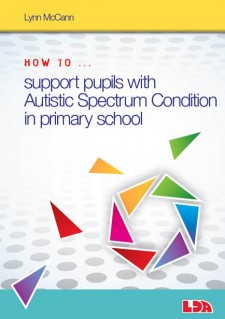Thinking about your autism pupils afresh
Christmas and the end of the autumn term was more than likely an extra stressful time for the child or children with autism in your class. As I wrote in this article, there would have been lots of extra changes and sensory overload as well as unpredictable events. Some children with autism do like Christmas and I hope that all of them had a good holiday at home, but it’s likely for some that it was just as stressful, and for many of the same reasons.
A new term is a good opportunity for you to look afresh at your pupils and review where they are up to after their first term in your class. I don’t mean by looking at their academic data (as I’m sure that this will be a feature of your planning this term) but by putting that aside and looking at the whole child you may find some helpful insights to enable you to make the rest of the school year successful for them.
Do you know what the child’s favourite activities are?
Can you list all the subjects they enjoy?
Who are their friends, do they have any friends?
How do they react/interact when other children approach them?
What things does the child notice during lessons?
What would they be doing if they could choose to do anything at all?
What have they got better at?
Can they follow your routines and general class instructions?
Have you had any autism training?
Do you understand how their autism affects them?
Can you list their strengths?
Do you know how their senses interact with the world?
Some of these questions might be easy to answer, some of them may need more investigation. What will be telling, is that if you, as their class teacher know very few of these answers, then you have not got to know the child at all.
- Maybe you’ve been relying on a teaching assistant to know the child well and differentiate the work for them?
- Maybe you’ve had a busy term and don’t feel that you are on top of your SEND support in class?
- Maybe you feel that you don’t understand autism, the child’s behaviour has overwhelmed you and you are out of your depth?
- Maybe the child seems to be doing ok and is getting by, but you still can’t answer many of these questions?
A teacher is a teacher of all the children in their class. The 2014 Code of Practice states that ALL teachers are teachers of Special Educational Needs and Disabilities (SEND). We can argue that there is more training needed (and in autism it can really help) but in the end, nothing can be as good as really knowing your pupil. And to do that, YOU should spend time with them, YOU should teach them (not just the TA) and YOU should build a good relationship with parents so that you know how the child lives their life out of school.
The best way to build a relationship with a child with autism is to find out what they enjoy, what they are interested in and what are their strengths. Then share some time with them engaged in those things. A child with autism often finds the school day intensely demanding, leading them to experience a lot of stress. Be a teacher who joins them in a favourite activity (not taking over but letting them lead) and share their special interests. Do this for a short time each day and it will usually help you both get to know each other. Don’t talk too much, don’t make demands. Listen to them and the different ways they communicate.
Then the child will become a whole person to you, not just a set of data statistics.
Emma and I practice this at all times. The way to work with our pupils with autism is through getting to know them and how autism affects them. We have to be creative and flexible, patient and carefully choose our words, or phrase our interactions. Our greatest moments are when through Lego, chickens, Harry Potter, Pokemon or Patterns, we have connected with a child and they begin to explain to us what autism is like for them. From that we can build an education support system that brings out the chance of success for them. It’s an ever changing, ever developing support system reacting to how they grow and change through the years, but in the end it is bespoke for each child, despite there being some general good-practice strategies that we use. It’s why, when we do training, we ask people to gather information about the child they know, so that they can develop a personalised plan that might be suitable for them, rather than just use generic strategies that may not be right at that time.
So, if you’d like a resolution for 2017 and the new term, please consider resolving to get to know your SEND / Autism pupils for real. You’ll be surprised at how your intuition about how to support them will grow with this knowledge.
- Don’t leave it to a TA, but work together and teach the pupil yourself whilst the TA is teaching something to other pupils.
- Use their interests to engage them in things they might find uninteresting (I once had a pupil writing about Beast Quest for two terms and he went from writing nothing to writing pages and pages of good quality texts).
- Build that relationship with parents. Ask them to teach you about their child’s autism. You may need to structure the meetings or use email but it can be really helpful for both. Don’t feel you have to solve all their problems but they may have some good ideas you can try.
- Ask for training if you haven’t had any. But remember to ask questions relating to the child you teach rather than thinking all of it will be relevant to them at once.
I will just mention my book. I hope you’d expect me to in my own blog posts! It’s out now and can be pre-ordered from LDA Learning, my publishers.
I’ve written it as a handbook that you can dip into to help you along the way, indeed throughout the child’s primary years. It’s arranged developmentally from early years to Y6 but takes into account that children with autism don’t always develop in a linear fashion, you can dip into it at whatever stage your child is at, whatever age. It’s full of practical advice and strategies and helps you understand autism from a child with autisms’ point of view.
I hope you’ll find it really helpful – but as I said above – nothing is as good as getting to know the child themselves.
This work is licensed under a Creative Commons Attribution-NoDerivatives 4.0 International License.




